Abstract
1. Direct measurements of the capillary pressure (Pc) were made in capillaries at the base of the nails of the fingers and toes of two subjects (the authors of this paper).
2. With the hand or foot at heart level, Pc varied over the range of 7-70 cm H2O with mean values of 43 cm H2O in both the fingers and the toes. Pc was higher in the arterial limb (mean 49 cm H2O) than in the venous limb (mean 34 cm H2O) of the capillary loops. The plasma colloid osmotic pressures for the two subjects were 33 and 34 cm H2O.
3. For capillaries at heart level there was a strong positive correlation between Pc and skin temperature when the latter was varied over the range 23-36 °C.
4. When the hand or foot was lowered, Pc increased less than the local arterial (Pa) and venous pressures (Pv). Furthermore the variation in Pc was reduced. In fourteen measurements of Pc made on capillaries in the toes of standing subjects, Pc was no more than 10 cm H2O greater than Pv. It is argued that the increase in the ratio (Pa — Pc)/(Pc — Pv) with hydrostatic load represents an increase in the ratio of pre- to post-capillary resistance.
5. When Pv was increased by inflating a sphygmomanometer cuff around the upper arm, (Pa — Pc)/(Pc — Pv) increased in the hand held at heart level. These changes were similar to those seen with changes in position.
6. The implications of the results are discussed with respect to fluid balance between the blood and tissues. It is argued that since Pc in the warm hand was never less than the plasma colloid osmotic pressure, fluid is not reabsorbed from the tissues into the capillaries of the warm skin of the hand even at heart level. Compensatory changes in the circulation appear to minimise the filtration of fluid into the feet of the standing subject but the mechanism of these changes remains obscure.
Full text
PDF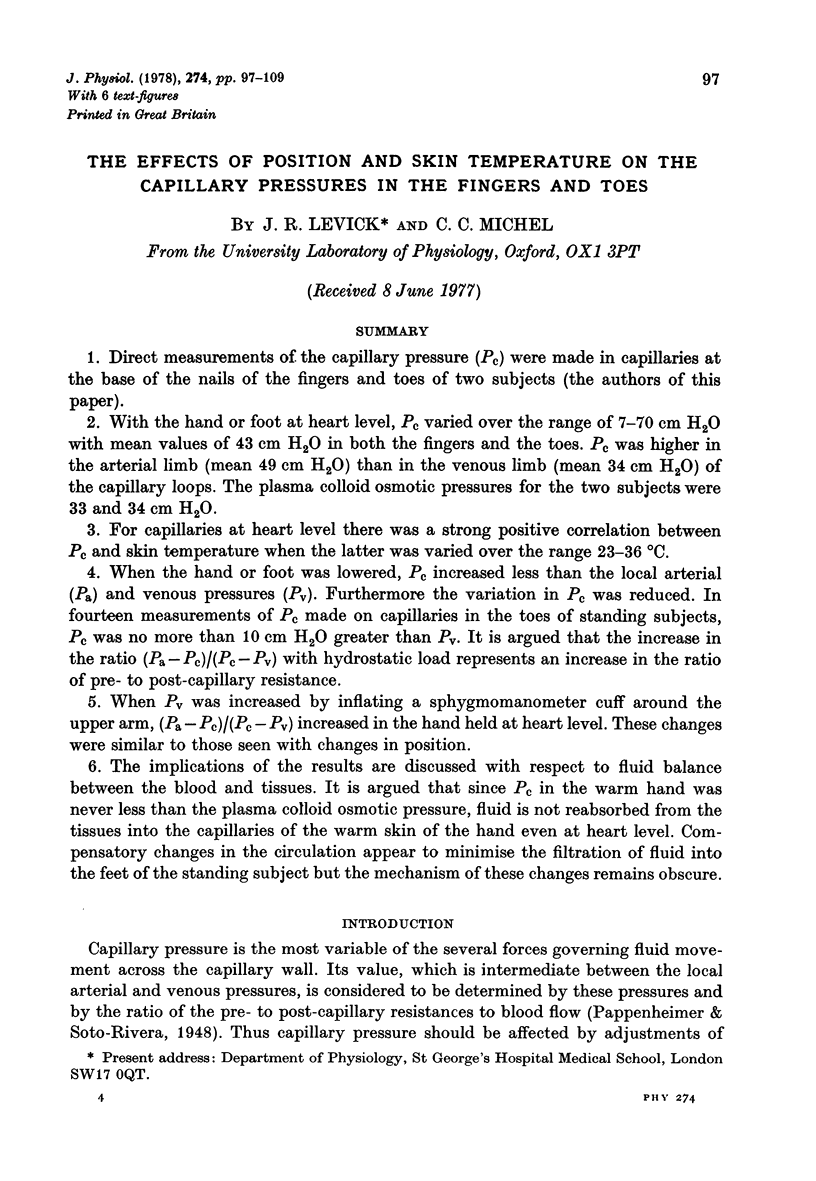
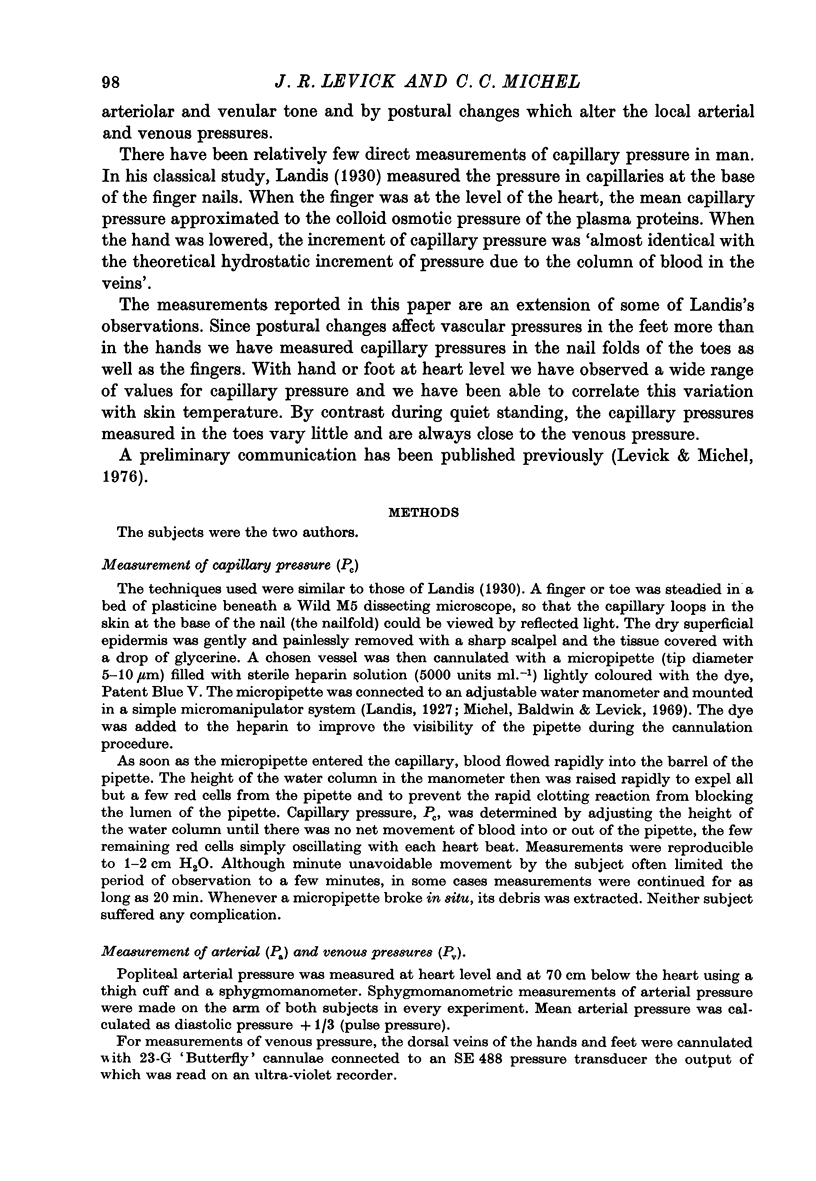
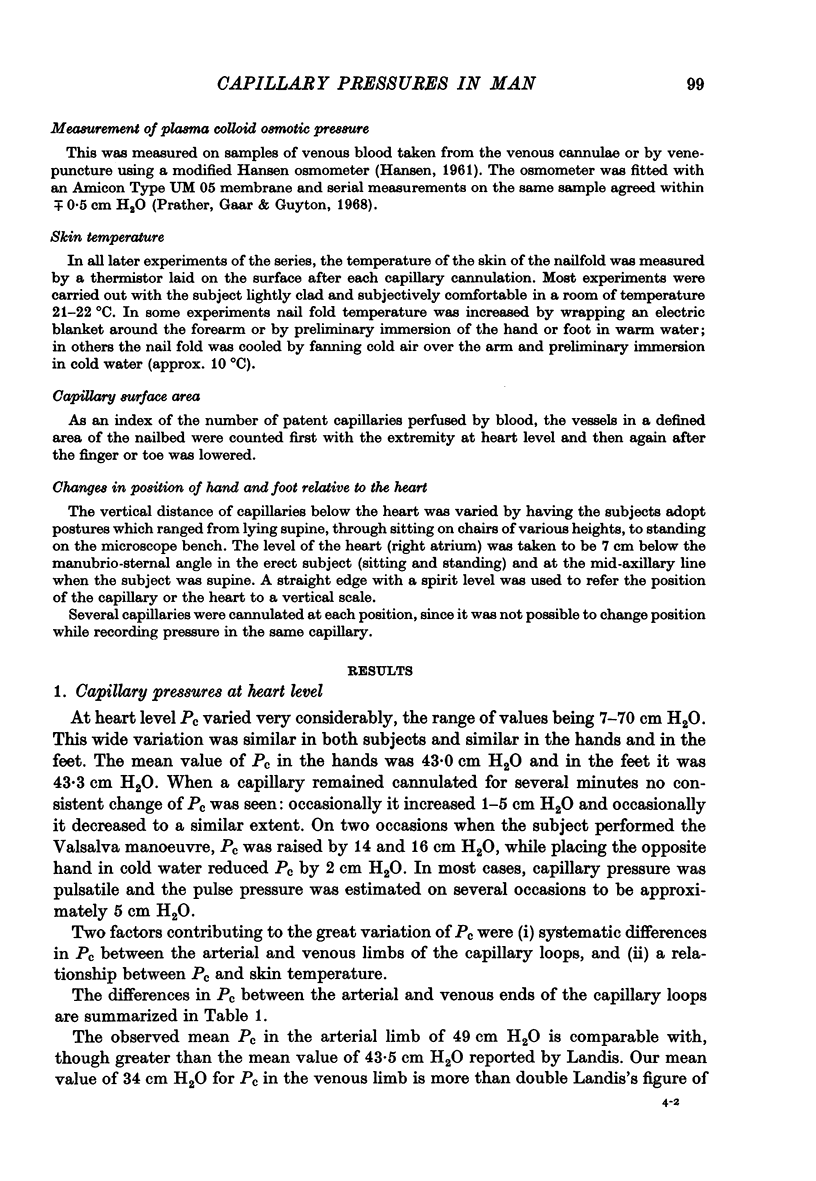
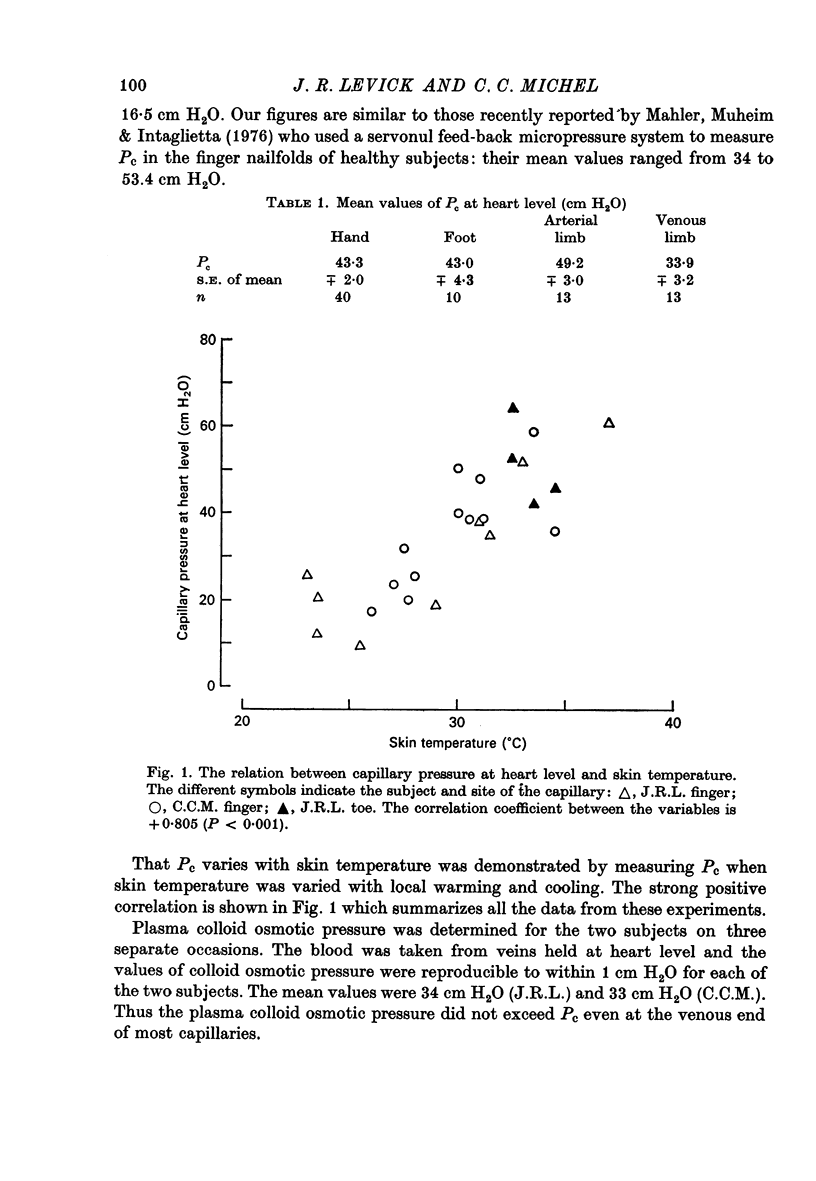
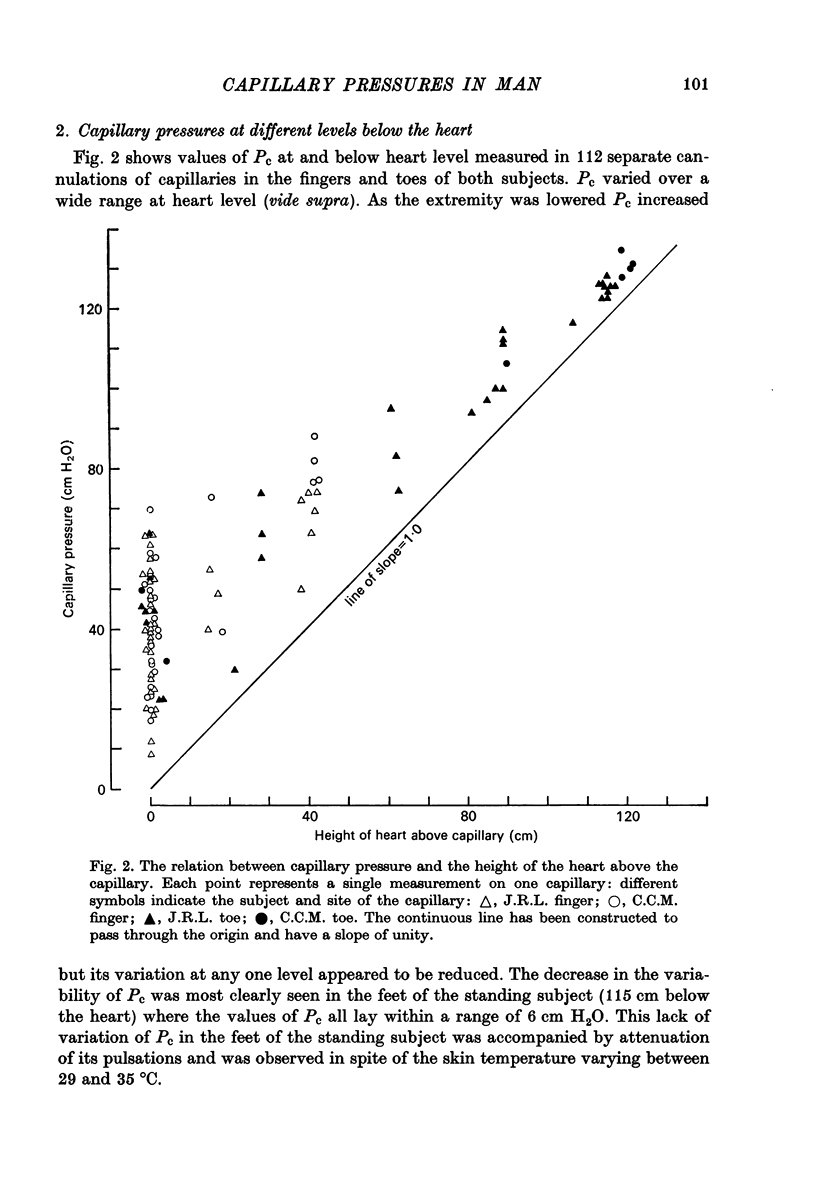
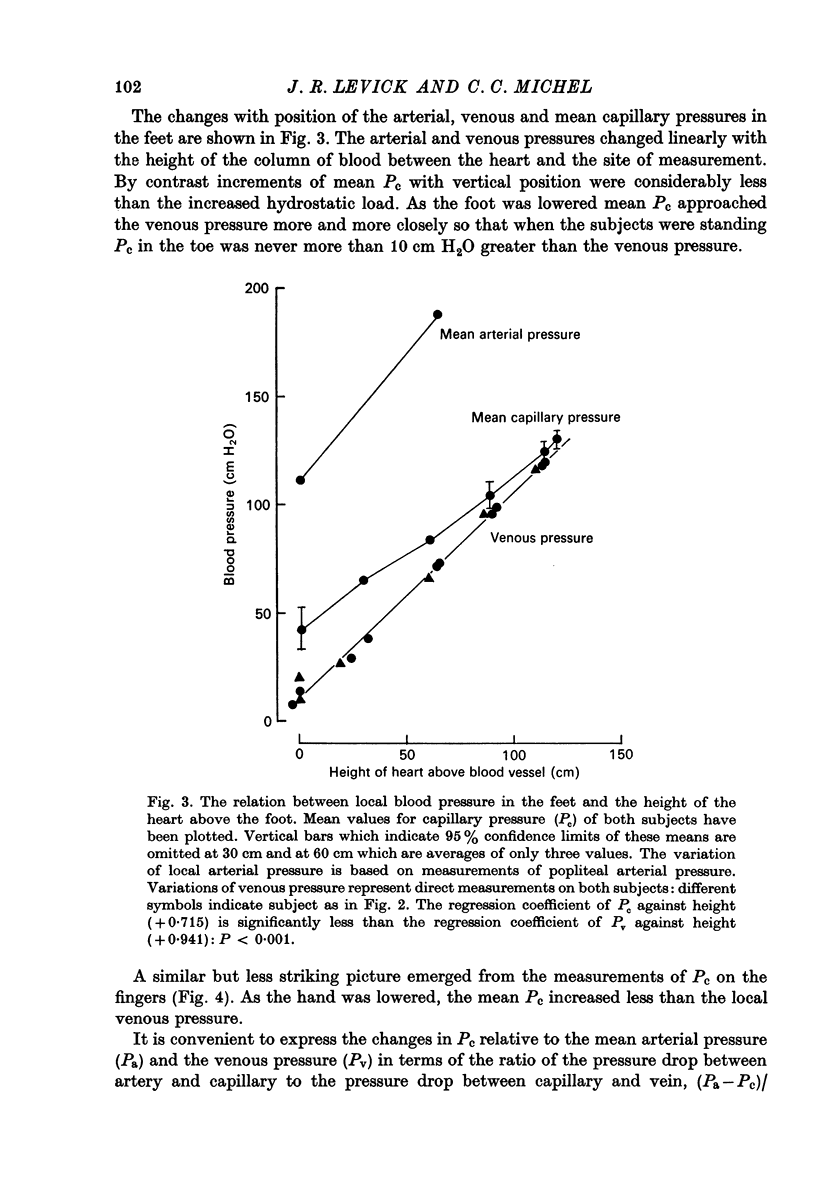
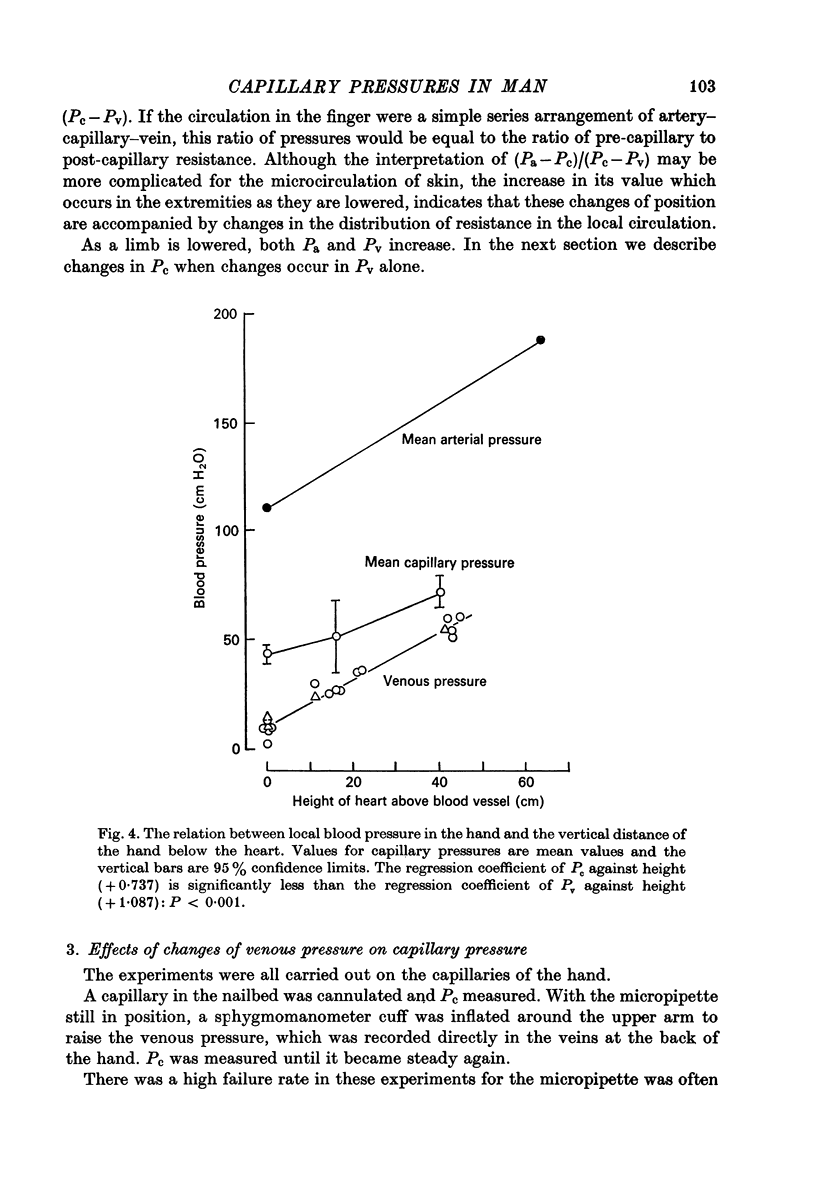
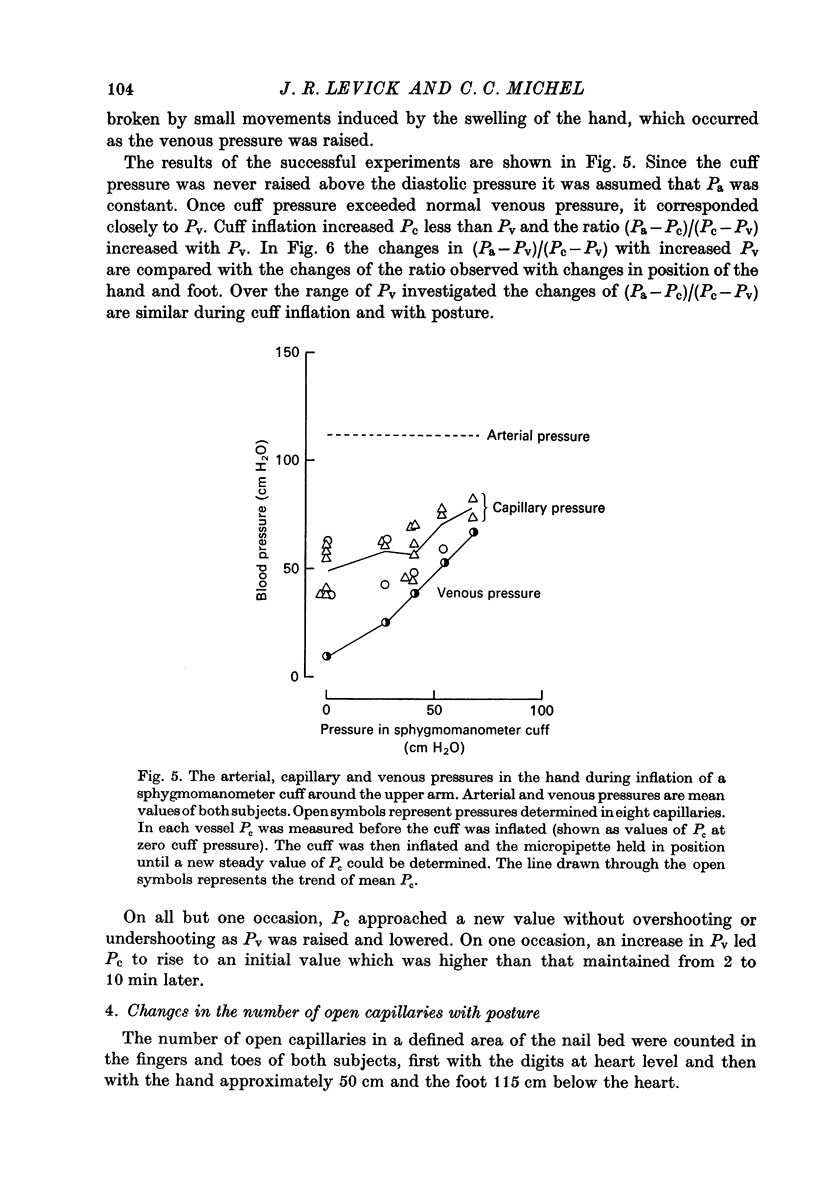
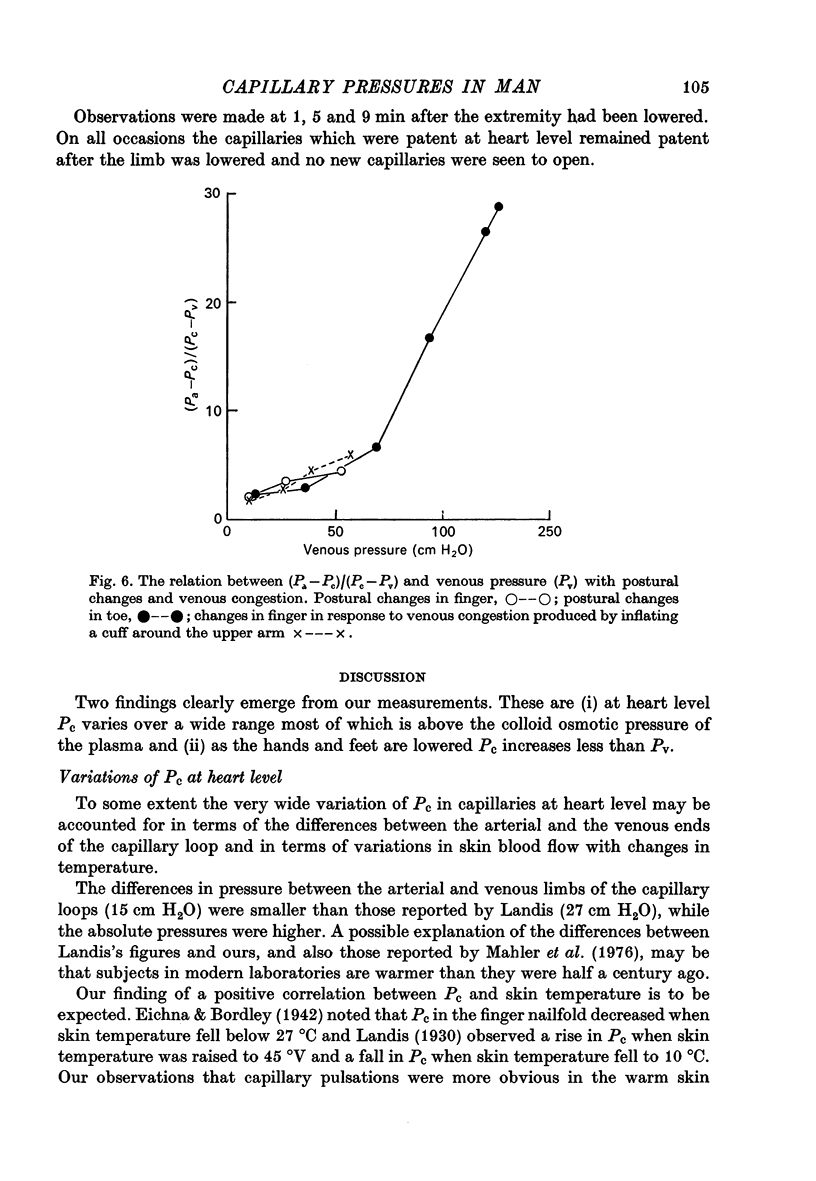
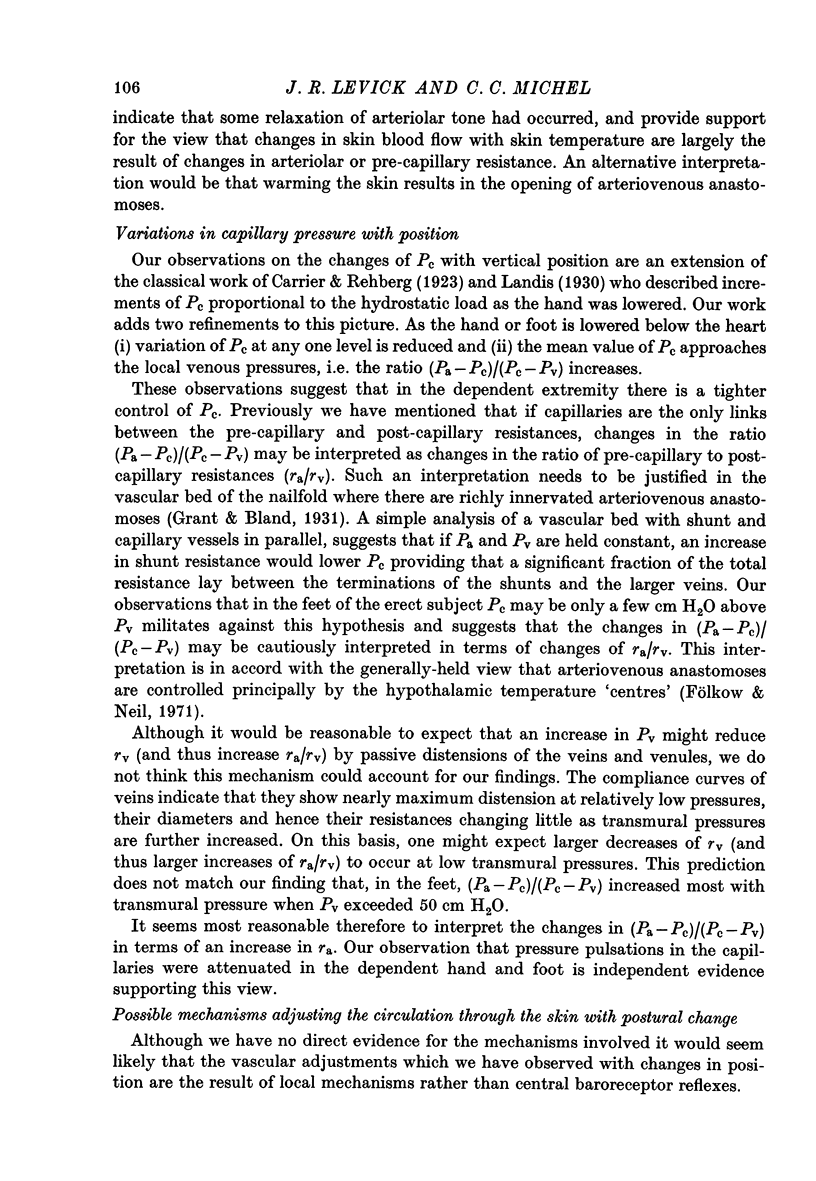
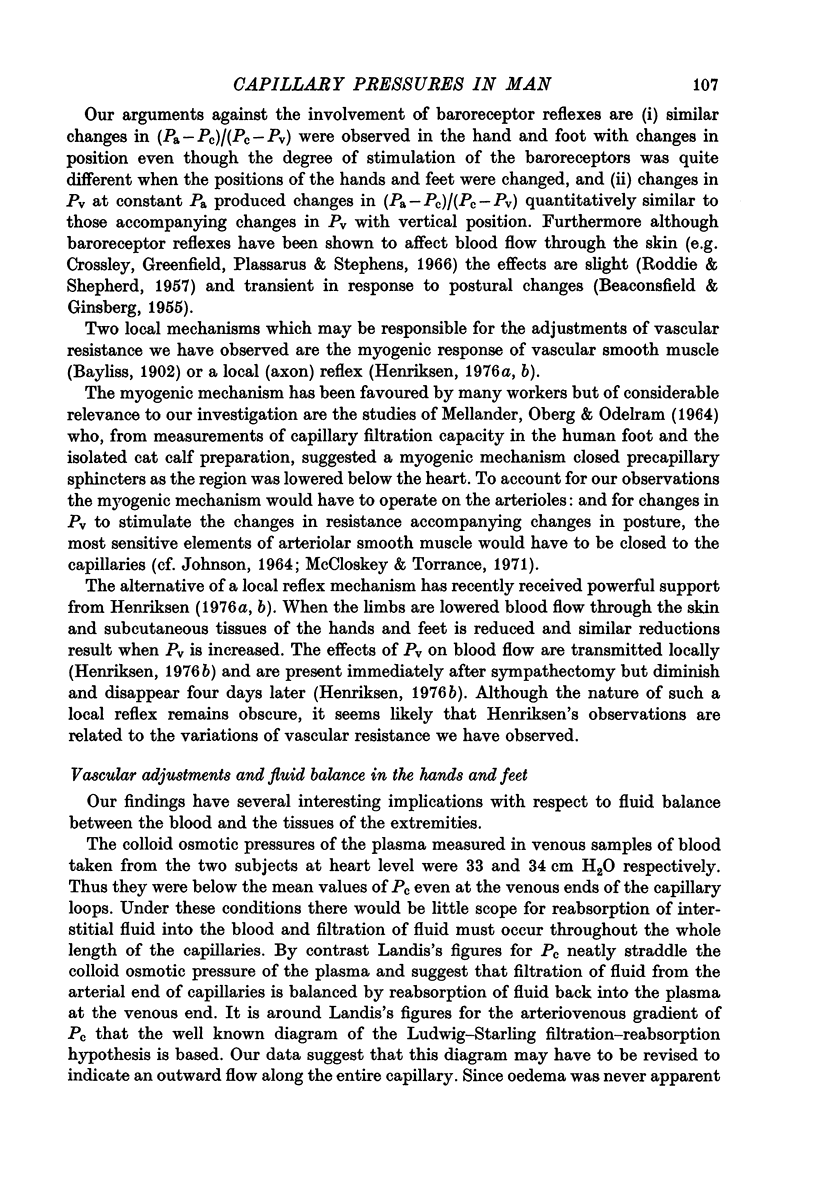
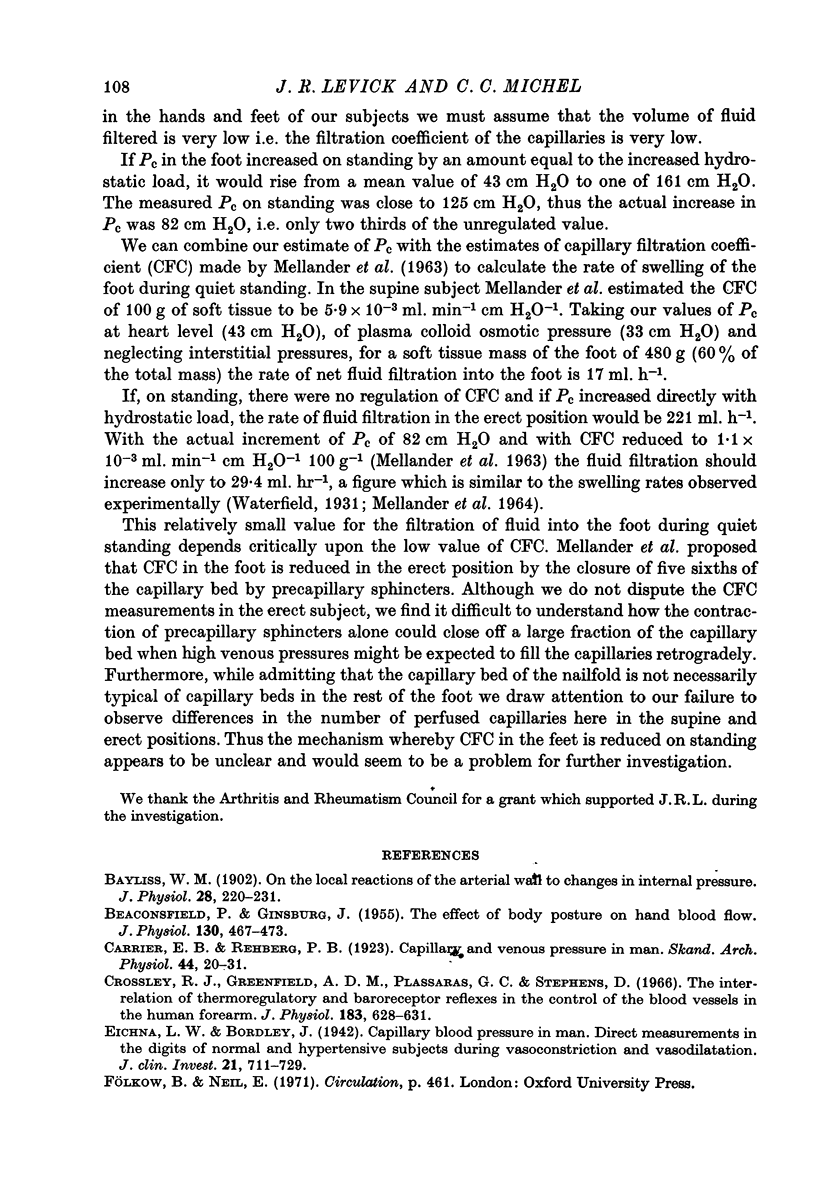
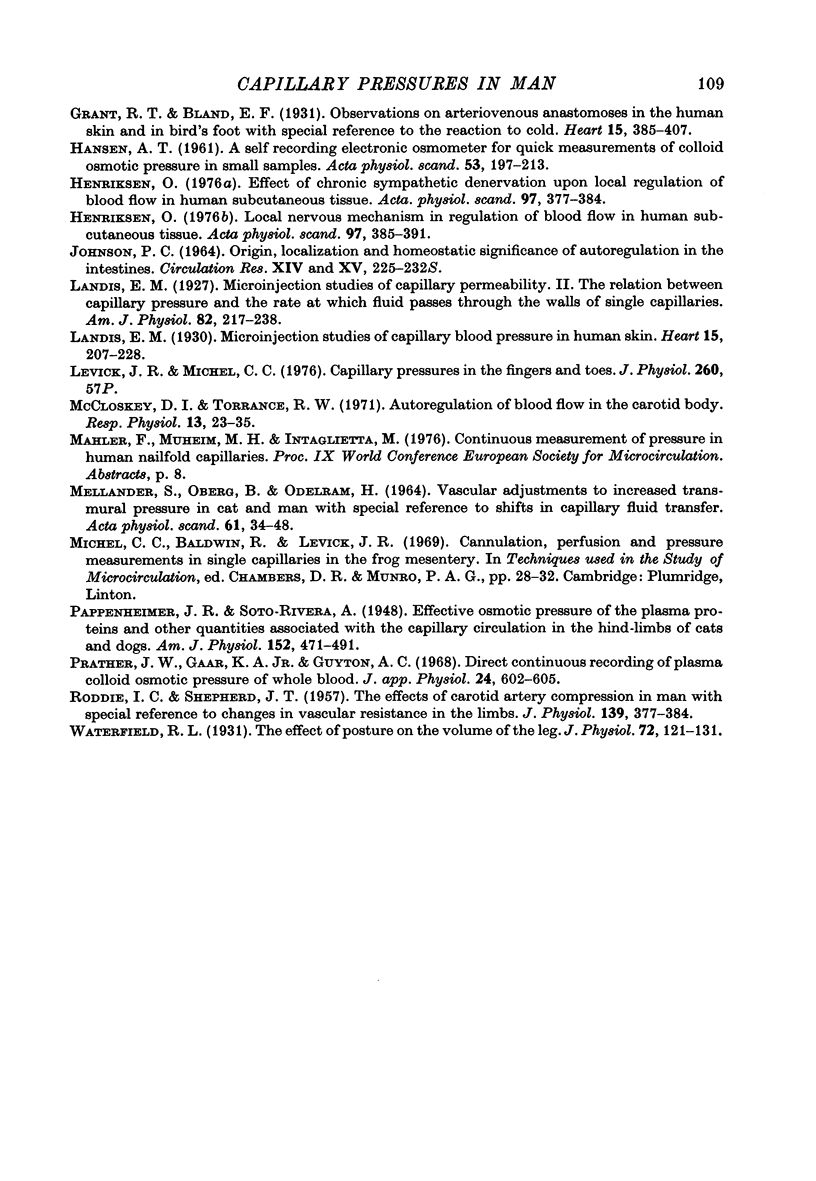
Selected References
These references are in PubMed. This may not be the complete list of references from this article.
- BEACONSFIELD P., GINSBURG J. The effect of body posture on the hand blood flow. J Physiol. 1955 Nov 28;130(2):467–473. doi: 10.1113/jphysiol.1955.sp005420. [DOI] [PMC free article] [PubMed] [Google Scholar]
- Bayliss W. M. On the local reactions of the arterial wall to changes of internal pressure. J Physiol. 1902 May 28;28(3):220–231. doi: 10.1113/jphysiol.1902.sp000911. [DOI] [PMC free article] [PubMed] [Google Scholar]
- Crossley R. J., Greenfield A. D., Plassaras G. C., Stephens D. The interrelation of thermoregulatory and baroreceptor reflexes in the control of the blood vessels in the human forearm. J Physiol. 1966 Apr;183(3):628–636. doi: 10.1113/jphysiol.1966.sp007888. [DOI] [PMC free article] [PubMed] [Google Scholar]
- Eichna L. W., Bordley J. CAPILLARY BLOOD PRESSURE IN MAN. DIRECT MEASUREMENTS IN THE DIGITS OF NORMAL AND HYPERTENSIVE SUBJECTS DURING VASOCONSTRICTION AND VASODILATATION VARIOUSLY INDUCED. J Clin Invest. 1942 Nov;21(6):711–729. doi: 10.1172/JCI101347. [DOI] [PMC free article] [PubMed] [Google Scholar]
- HANSEN A. T. A self-recording electronic osmometer for quick, direct measurement of colloid osmotic pressure in small samples. Acta Physiol Scand. 1961 Nov-Dec;53:197–213. doi: 10.1111/j.1748-1716.1961.tb02278.x. [DOI] [PubMed] [Google Scholar]
- Henriksen O. Effect of chronic sympathetic denervation upon local regulation of blood flow in human subcutaneous tissue. Acta Physiol Scand. 1976 Jul;97(3):377–384. doi: 10.1111/j.1748-1716.1976.tb10277.x. [DOI] [PubMed] [Google Scholar]
- Henriksen O. Local nervous mechanism in regulation of blood flow in human subcutaneous tissue. Acta Physiol Scand. 1976 Jul;97(3):385–391. doi: 10.1111/j.1748-1716.1976.tb10278.x. [DOI] [PubMed] [Google Scholar]
- Levick J. R., Michel C. C. Capillary pressures in the fingers and toes [proceedings]. J Physiol. 1976 Sep;260(2):57P–57P. [PubMed] [Google Scholar]
- MELLANDER S., OBERG B., ODELRAM H. VASCULAR ADJUSTMENTS TO INCREASED TRANSMURAL PRESSURE IN CAT AND MAN WITH SPECIAL REFERENCE TO SHIFTS IN CAPILLARY FLUID TRANSFER. Acta Physiol Scand. 1964 May-Jun;61:34–48. doi: 10.1111/j.1748-1716.1964.tb02940.x. [DOI] [PubMed] [Google Scholar]
- McCloskey D. I., Torrance R. W. Autoregulation of blood flow in the carotid body. Respir Physiol. 1971 Oct;13(1):23–35. doi: 10.1016/0034-5687(71)90062-4. [DOI] [PubMed] [Google Scholar]
- Méan P., von Niederhaeusern F. La femme et le sport. Gynaecologia. 1966;161(2):125–150. [PubMed] [Google Scholar]
- Prather J. W., Gaar K. A., Jr, Guyton A. C. Direct continuous recording of plasma colloid osmotic pressure of whole blood. J Appl Physiol. 1968 Apr;24(4):602–605. doi: 10.1152/jappl.1968.24.4.602. [DOI] [PubMed] [Google Scholar]
- RODDIE I. C., SHEPHERD J. T. The effects of carotid artery compression in man with special reference to changes in vascular resistance in the limbs. J Physiol. 1957 Dec 31;139(3):377–384. doi: 10.1113/jphysiol.1957.sp005898. [DOI] [PMC free article] [PubMed] [Google Scholar]
- Waterfield R. L. The effect of posture on the volume of the leg. J Physiol. 1931 Jun 6;72(1):121–131. doi: 10.1113/jphysiol.1931.sp002766. [DOI] [PMC free article] [PubMed] [Google Scholar]


